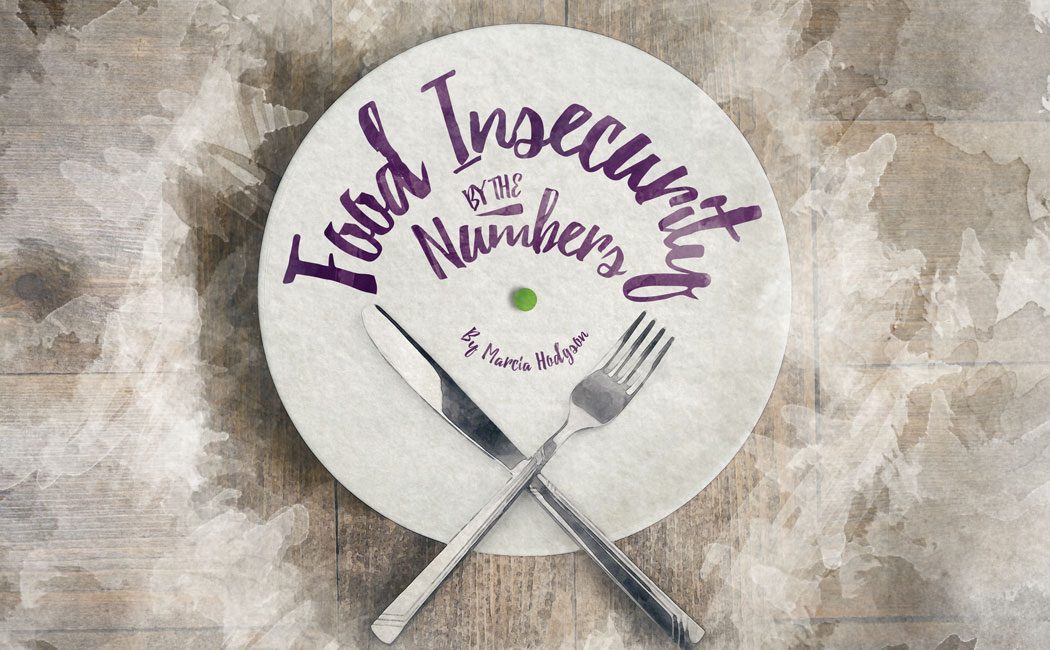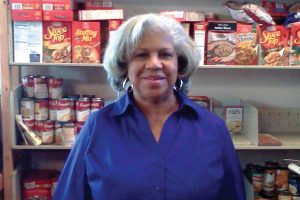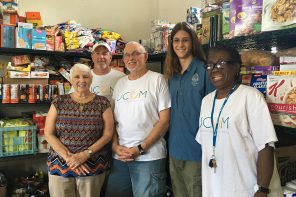Hunger knows no boundaries. It affects people in rural and urban areas, the college-educated and the uneducated, single-parent households, families supported by two breadwinners, and elderly citizens on fixed incomes. Not everyone who stands in a Jacksonville breadline is necessarily homeless.
According to Feeding Northeast Florida, Jacksonville’s largest food bank, more than a quarter of a million people in the counties of Baker, Bradford, Clay, Duval, Flagler, Nassau, Putnam, and St. Johns have no idea where their next meal is coming from, and the most disturbing part is more than 80,000 of them are children.
One common definition of food insecurity is the ability for a family to feed itself three out of four weeks per month, said Hunger Fight Co-Founder Dean Porter. “The problem is that there is always a fourth week, so a lot of people need assistance.”
In Jacksonville, two out of five Duval County residents live in poverty or at poverty’s edge, according to the 2015 census, which defines poverty as a family comprised of two adults and two children living on $24,000 or less a year. Families that make less $48,000 are considered to live on the edge of poverty, and 39.6 percent of Duval County residents are in that category.
One in six adults and one in four children in Northeast Florida live in poverty or on its edge, and one in five adult Duval County residents are food insecure, according to statistics provided by Feeding Northeast Florida and the Beaches Emergency Assistance Ministry (BEAM).
Along the coast, 13 percent of Atlantic Beach residents are food insecure and 23 percent of that population are children. In Jacksonville Beach the numbers are higher – 22 percent of the population and 11 percent, children. Neptune Beach boasts 7 percent, 2 percent children, and 5 percent of Ponte Vedra kids suffer from food insecurity, according to Betsy Fallon of BEAM.
In fact, in Duval Country, of the 42,500 Title 1 elementary school students who receive a free or reduced lunch provided by the USDA’s National School Lunch program, 29 percent eat two or less meals a day, said Porter.
According to Kristen Anderson of Feeding Northeast Florida, the face of hunger looks like this: 57 percent are families with adults working full or part-time; 29 percent are children under 18; 15 percent are seniors over 65; 87 percent live in permanent housing; and 20 percent have at least one family member who has served in the military. Fifty-nine percent of the food insecure are forced to choose daily between buying food or paying rent; 68 percent choose between eating or medical care; and 69 percent have no reliable transportation.
Senior citizens, who live on Social Security or a tiny pension, often find their situation is complicated by multiple chronic health conditions, which hamper their ability to fix themselves a good nutritious meal. According to the Florida Department of Elder Affairs, more than 4,300 seniors need nutritional aid, said Rosa Rivera of Aging True.
Lack of affordable housing is another problem plaguing the region’s hungry. In Duval County the fair-market cost to rent a two-bedroom apartment is $910 a month, according to BEAM. Families need to earn $36,000 a year or $17.50 an hour to be able to afford the rent, said Fallon, adding that breadwinners earning minimum wage ($7.79 an hour) need to work at least 98 hours a week to pay the fee.
Often cheaper housing lies in “food deserts,” areas of the city that have no mainstream supermarkets and lack access to affordable food. In Duval County, food deserts are sorted into seven clusters, and the majority lie within the I-295 beltway, according to Lauren Weedon Hopkins of Catholic Charities. “There are roughly 177,000 food insecure individuals living in these clusters,” she said.
Also, homelessness has increased 33 percent in Jacksonville over the past year, according Penny Kievet of the City Rescue Mission, where on any given day nearly 500 residents are provided food, clothing, and/or shelter. Florida ranks 14th in the United States in homeless population, and there are more than 400 homeless citizens in Downtown Jacksonville alone.
In feeding the hungry, it is important to give “people a hand up not a hand out,” said JuCoby Pittman of Clara White Mission.
“It’s critical that we help individuals and families move towards economic stability, including employment and housing,” agreed Bernice Mauras of Community Health Outreach.
Society needs to recognize the issue at hand and educate itself on the available resources that currently exist, said Hopkins. “To make a lasting impact and eventually alleviate the problem, it is up to the community to pioneer innovative solutions and collaborations to break the cycle of poverty,” she said.
Individuals can do their part by supporting local food charities through food donations, financial help, and volunteer hours.
Also important is becoming “more compassionate toward our neighbors who are experiencing food insecurity,” said Kelly Belich of The Salvation Army. “We need to share stories about the people who are suffering in this way and shine a light on the issue to hopefully lessen the stigma and the shame people feel when they face food insecurity.”




